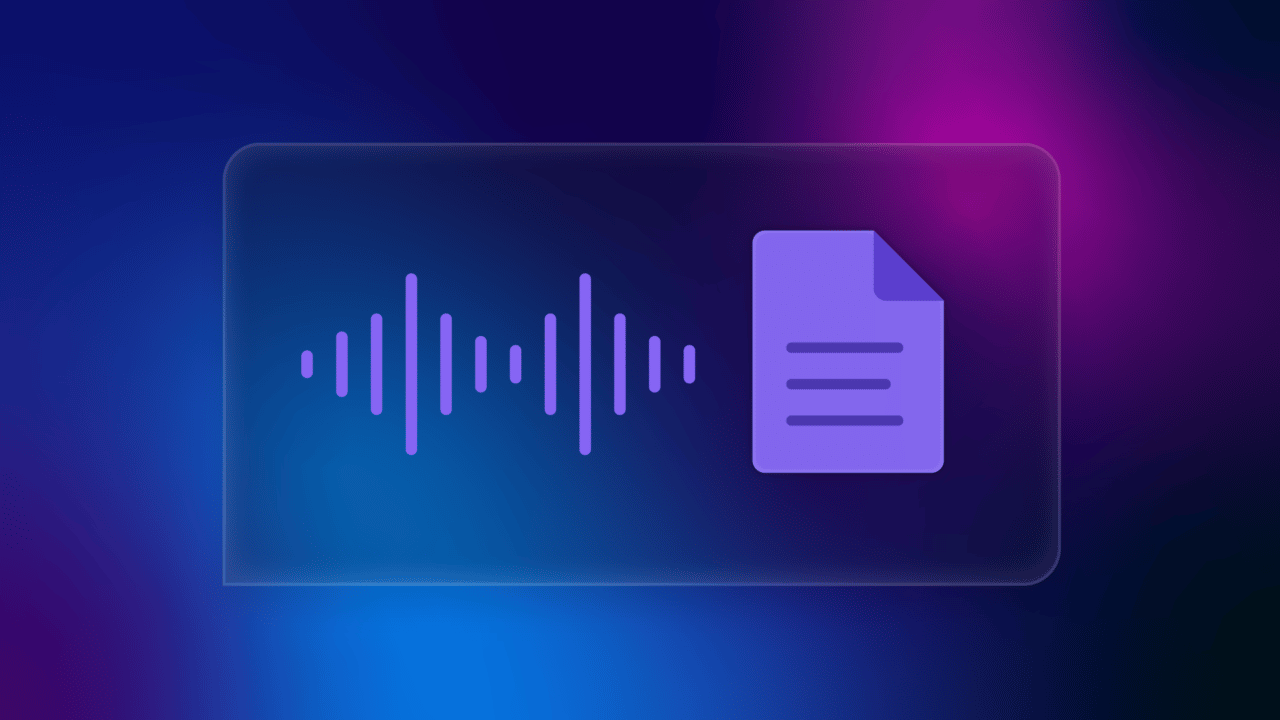Modern speech-to-text software can not only transcribe audio, but can also organize and manage that audio content. Add into the mix conversation intelligence and you can mine that data for contextual insights that offer a wide variety of benefits.
By using conversation AI, you gain access to the highest quality speech-to-text services capable of performing state-of-the-art transcriptions for both audio and video conversations. These conversations can then become searchable transcripts with timecodes and speaker information.
Transcription
Symbl.ai’s Transcription Plus feature enables developers to use accurate speech-to-text capabilities across many use cases and platforms. Users can get started with a comprehensive suite of APIs for any use case or application, all with no upfront training or custom models needed.
The transcript offers one of the easiest ways to navigate an entire conversation, and it can be filtered by speaker or topic.
Real-time transcription
Unlike batch transcription, which is done after the fact and at a much slower pace, real-time transcription requires a keen ear, attention to detail, and the ability to focus on complex conversations without distraction.
The good news is that transcription with enhanced AI can help improve the accuracy of real-time transcription when combined with factors such as clear audio, sentence boundary detection, punctuation detection, and speaker diarization.
Asynchronous transcription
Transcripts can also be generated from voice and video conversations using a recorded file. This is done through accessing the files via the post-conversation summary UI. The post-conversation summary page enables editing, copying, and sharing transcripts from the conversation.
Asynchronous transcription allows organizations to access untapped value from the endless hours of audio and video files they may possess!
What are the limitations of speech-to-text?
While transcriptions in and of themselves can be valuable to some organizations, there is so much untapped value in using a speech-to-text API alone. Without the AI component analyzing your conversations, you are missing out on additional insights and critical contextual details.
Uncovering this information can be a heavy lift for most organizations because you need to access the data behind the spoken words. When deciding between the benefits of buying a conversation intelligence solution vs. building your own, consider the following points:
- Creating rules-based systems takes a lot of time and manual work to be successful. The system will only learn according to predefined rules, limiting the depth of coverage you can achieve. The capacity of the system is likely to be lower than you expect.
- Deep learning systems need a high volume of quality data, and—similar to rules-based systems—the training process is time-consuming and costly. If you ever need to change your requirements, you’ll need to start over with new sets of data.
Any build will also likely be missing a critical component of the conversation: context. So, the best option for most businesses is to choose a pre-built solution to provide that context; by doing this you can add capabilities without spending time training models.
Why use Symbl.ai for Speech-to-text Transcription?
Symbl.ai’s conversation intelligence platform empowers businesses and applications to truly understand and extract insights from human conversations at scale. Symbl.ai’s streaming API lets you capture conversations in real-time and easily add speaker diarization and custom vocabulary to ensure you get the most accurate transcriptions possible.
Based on proprietary AI technology that can detect and map abstract concepts and information structures, Symbl.ai delivers natural conversation understanding across all channels.
Symbl.ai’s advanced contextual AI understands the various dimensions of the conversation and uses it to further improve the recognition of the text and who said what. Because of this, your business will gain the most accurate transcriptions and relevant insights possible.
Mobile and video calls
Symbl.ai recognizes speech-to-text models for mobile and video calls with unparalleled accuracy and meticulously punctuated transcriptions.
Real-time captioning
Symbl.ai allows you to add subtitles to live video conferencing or webinars for seamless collaboration or add captioning to a customer care call for agent assistance.
Multi-Language support
Symbl.ai supports 20+ languages including English, Russian, French, Italian, Hindi, Japanese, Spanish—and has support models for different accents and dialects.
Speaker Diarization
On top of all that, Symbl.ai allows you to identify unique speakers in a conversation and predict which utterances belong to whom.
Custom Vocabulary
Lastly, Symbl.ai’s speech-to-text supports Custom Vocabulary features which can recognize specific words or phrases that are more frequently used within a given context.
Next Steps
Speech-to-text is just the beginning. Beyond transcription, Symbl.ai’s APIs offer a plug-and-play solution for developers looking integrate conversation intelligence both in real-time and asynchronously within their communication products and workflows.
Ready to try Symbl.ai? Get started with a free account. Visit this documentation page to learn more about Symbl.ai’s speech-to-text feature.
